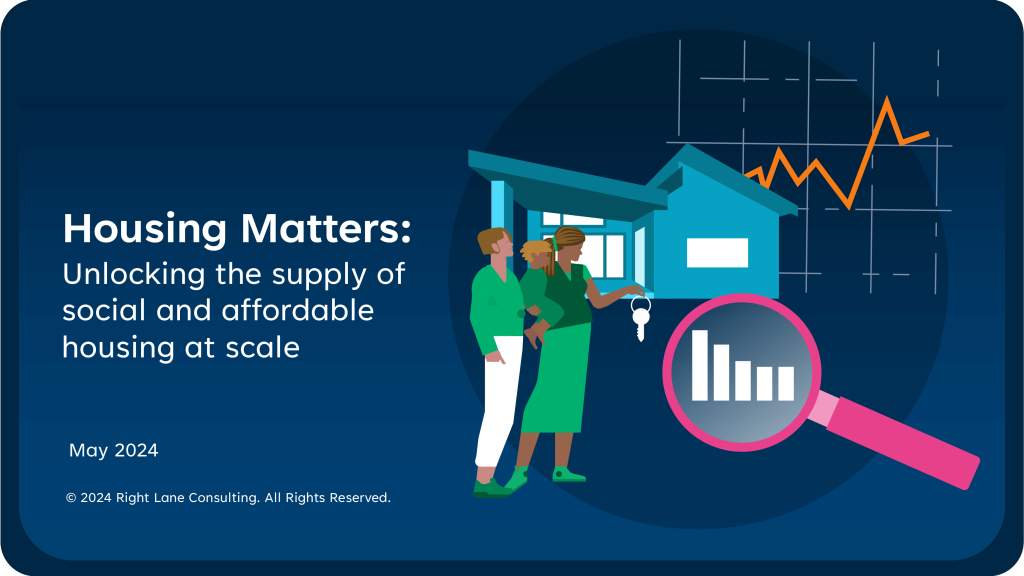Housing Matters Report 2024: Unlocking the supply of social and affordable housing at scale

In 2024, Right Lane Consulting published its first Housing Matters Report, contributing thought leadership and new insights to the sector discussion on how to unlock the supply of social and affordable housing.
Unlocking the supply of social and affordable housing at scale
Australia’s housing crisis is escalating and requires new approaches to address systemic problems in the housing industry. We must increase and diversify the supply of housing to provide more homes that are affordable to low- and moderate-income earners. Achieving this outcome requires long-term financial support from the Commonwealth Government and action at all levels of government to simplify, streamline and strengthen the housing supply system.
Right Lane recommends 6 actions for government to unlock the supply of social and affordable housing at scale
While we recognise the need for CHPs, institutional investors and other industry stakeholders to actively develop partnerships, innovate and build their capacity to deliver social and affordable housing at scale, action by other players will only be effective if the right government policy, planning and funding settings are in place. Our proposed actions therefore focus on government.
- Establish a national housing framework
- Provide funding certainty for social and affordable housing development
- Encourage scale in social and affordable housing development
- Support capacity and capability building in the CHP sector
- Expedite planning
- Unlock access to land
Chapter 1: Australia’s housing crisis
Increasing demand for housing coupled with a chronic undersupply of appropriate housing that meets the needs of all Australians has created the housing crisis.
- Australia’s housing crisis results from housing supply not matching demand.
- Housing insecurity is rising with an estimated 641,000 very low- and low-income Australians currently homeless or living in unaffordable housing.
Chapter 2: A new approach to housing
Recent government funding commitments are creating a wave of activity, but this alone will not provide the level of social and affordable housing required due to the scale of the housing crisis; new partnerships and affordable housing models are required.
- Governments are responding to the housing crisis, spurring activity across the country.
- The Housing Australia Future Fund (HAFF) will significantly boost supply but is insufficient to fully meet Australia’s social and affordable housing needs.
- We need collaborative approaches to underpin the development of housing models that help fill the gap in the supply of social and affordable housing.
Chapter 3: Institutional investment
New partnership models are paving the way for institutional investment at scale in Australia; however, further government intervention is necessary to address barriers and get the policy settings right.
- Institutional investors have invested in social and affordable housing in Australia in the past, but experience is sporadic and lacks scale.
- Recent policy reforms and new partnerships have addressed some of the barriers to institutional investment, with examples of recent super fund commitments exceeding $200m.
- Further intervention to get the settings right will unlock the potential of institutional investment in social and affordable housing.
Chapter 4: Build-to-rent (BTR)
A national housing framework, newly defined asset class for BTR, and financial and planning supports are needed to de-risk and enable institutional investment in BTR.
- BTR is an established asset class in international jurisdictions that provides unique benefits to tenants and investors.
- BTR’s recent rapid growth in the United Kingdom (UK) provides lessons for the emerging Australian market.
- BTR is an emerging asset class in Australia with significant investment opportunities, but is hindered by national fragmentation and regulatory, financial and cultural barriers.
If you would like to know more about our work in the housing and homelessness sector, get in touch today.